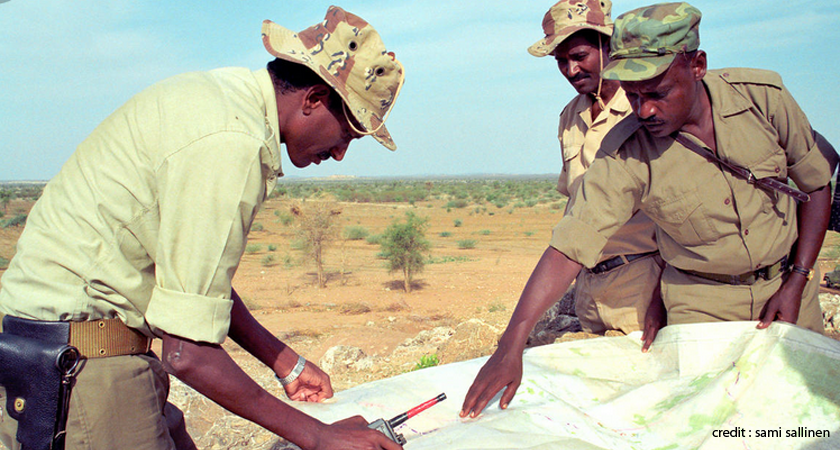ASMARA (HAN) May 2. 2016. Public Diplomacy & Regional Security News. By Bereket Kidane. Twenty-five years ago this month, the Eritrean People’s Liberation Army (EPLA), the armed wing of the Eritrean People’s Liberation Front (EPLF), started making preparations for its final major offensive or “zazami quinat ዛዛሚ ኩናት” in Tigrigna to take Asmara and Assab and liberate Eritrea from the enemy.
The fall of the Nadew Command and Capture of Afabet, the largest three-day battle ever fought on the African continent where nearly 20,000 Ethiopian troops were killed or captured by the EPLF, had already started the beginning of the end of the colonial Ethiopian Army in Eritrea.
The EPLF followed the fall of the Nadew Command with another decisive victory over the Ethiopian Army and Navy by capturing the port city of Massawa in February of 1990. The liberation of Massawa cut-off supplies and ammunition to the Ethiopian troops stationed in the highlands of Eritrea, creating ideal conditions to take the capital city Asmara in a final offensive.
The final offensive to take Asmara began in the Dekemhare Front. In between the fall of Massawa and the assault on the Dekemhare Front there were many small named and unnamed battles in the highlands of Eritrea between the EPLA and Ethiopian Army.
According to a documentary series produced by Eri-TV narrated by Lt. Colonels Rezene Woldegebriel and Eyob Negassi, and Major Mihretab Kidane, before the final offensive to take Asmara could begin in Dekemhare, the 70th, 16th, and 52nd units of the EPLF had been attacking and softening the enemy for a couple of months.
In May of 1991, the 85th unit left Gindha, crossed through Massawa and Ruba Hadas (Haddas River) and cut through Mai Seraw just outside of Segeneiti to arrive in Dekemhare for the final push. The 85th unit traveled mostly at night on military trucks to get to Mai Seraw. From Mai Seraw the infantry troops walked on foot and arrived in the Dekemhare Front. The 85th unit was flanked by the 16th and 52nd units to its left and right, and greatly assisted by the 24th Brigade in its final offensive all the way to Asmara. The 82nd Brigade, which sent one of its battalions to the Assab Front, was kept as a reserve in the area. The 18th and 22nd Brigrades also participated in attacks on the mountainous areas of Dekemhare.
The enemy had three trenches and defensive lines in the area. The first round of the EPLA’s attacks was done in waves in order to dislodge the enemy from its trenches and capture strategically important higher grounds. The EPLA was aware that unless it quickly captured and controlled the higher grounds around the Dekemhare front, the final offensive was going to fail. So the emphasis was on speed. The enemy was fully aware that the 85th unit had arrived in the area on May 18, 1991 so there were no surprises. The battle for Dekemhare was one of the fiercest and bloodiest as there were no options to dislodge the enemy but to directly charge the trenches. The offensive on the Dekemhare front succeeded after a fierce 72 hour battle that saw the EPLA sacrifice some of its finest troops.
On the morning of May 20th, the EPLF continued its attacks and captured Adi Harim. It can be argued that the armed struggle for Independence that began on September 1, 1961 in Adal concluded at the Dekemhare front for all intents and purposes because from there it was an easy walk to Asmara although there were some patches of resistance by the Ethiopian troops along the way.
What one finds incredible and quite moving is that the tegadeltis that were sent to assault the enemy’s trenches were basically told that they were going to die but they did not flinch as long as victory was achieved and the tegadeltitroops behind them could march on to the capital city, Asmara, to finish the job. Their only concern was victory for the Eritrean people and the end of the colonial Ethiopian Army in Eritrea.
It’s hard to believe that it has been 25 years since those brave, selfless tegadeltis fell at the Dekemhare Front and sacrificed themselves at the altar of freedom so Eritrea can exist as a sovereign nation.
During this Silver Jubilee Anniversary month of Eritrea’s liberation, it is important to commemorate all of the great battles that took place during the armed struggle of independence and the tegadeltis who fought in them. Silver jubilees by their nature are always a little special and extraordinary.
Zelealemawi Zikhri n Swuatna!
Awet n Hafash!

Leave a Reply